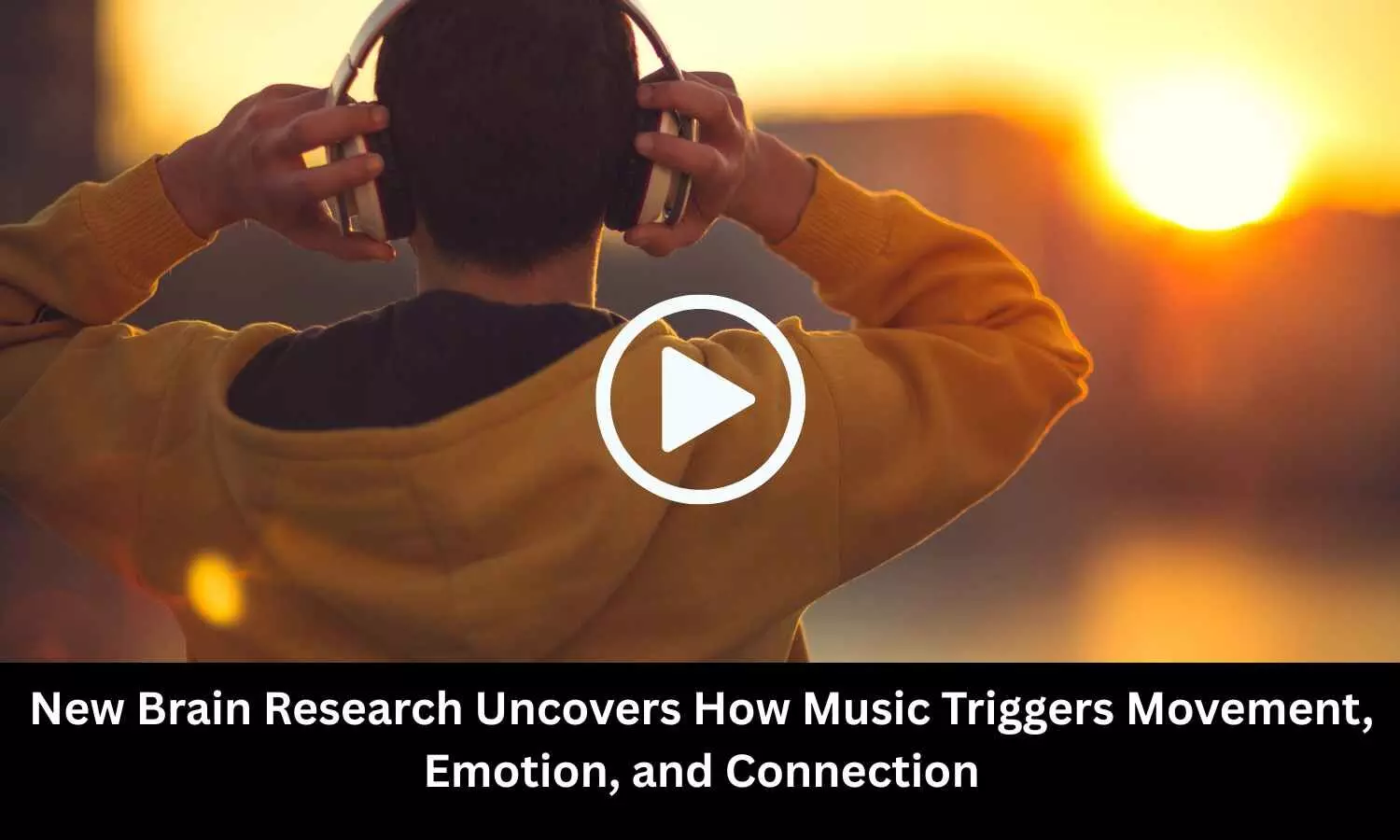New Brain Research Uncovers How Music Triggers Movement, Emotion, and Connection
- byDoctor News Daily Team
- 22 October, 2025
- 0 Comments
- 0 Mins

A new study published inThe Journal of Neuroscienceby researchers from Université catholique de Louvain reveals why our brains sync more naturally to sound than touch when it comes to rhythm perception. The team found that when people listen to rhythmic beats, their brains produce slow, steady waves that align perfectly with the music’s pulse. However, when the same rhythm is experienced through touch-like vibrations on the fingertips, beat-like brain waves do not form. The study involved 45 healthy adults who tapped along to rhythmic patterns delivered either through sound or tactile vibrations. Usingelectroencephalography(EEG) to monitor brain activity, researchers observed that sound induced low-frequency brain waves that mirrored the rhythm, resulting in more precise tapping. In contrast, touch causedbrain activityto respond to individual vibrations without forming a cohesive beat pattern, leading to less steady tapping. This research highlights the special link between hearing and rhythm perception, where the auditory system organizes rapid sensory events into slower, meaningful pulses called beats. Touch, however, processes vibrations as separate sensations, suited for detecting textures rather than grooves. The findings offer exciting potential for therapies targeting neurological conditions likeParkinson’s diseaseandstroke, where rhythm-based cues can support movement retraining. They also shed light on how rhythm training benefits language learning and attention in children, by coordinating timing between brain and body. In essence, the study confirms that music moves us uniquely through sound, syncing our minds and bodies in ways touch simply cannot. Reference:C.L. and S.N. designed research; C.L. performed research; C.L. and S.N. analyzed data; C.L. and S.N. wrote the first draft of the paper; C.L., T.L., R.P., and S.N. edited the paper; C.L., T.L., R.P., and S.N. ; Behavior-relevant periodized neural representation of acoustic but not tactile rhythm in humans; The Journal of Neuroscience; DOI: https://doi.org/10.1523/JNEUROSCI.0664-25.2025
Disclaimer: This website is designed for healthcare professionals and serves solely for informational purposes.
The content provided should not be interpreted as medical advice, diagnosis, treatment recommendations, prescriptions, or endorsements of specific medical practices. It is not a replacement for professional medical consultation or the expertise of a licensed healthcare provider.
Given the ever-evolving nature of medical science, we strive to keep our information accurate and up to date. However, we do not guarantee the completeness or accuracy of the content.
If you come across any inconsistencies, please reach out to us at
admin@doctornewsdaily.com.
We do not support or endorse medical opinions, treatments, or recommendations that contradict the advice of qualified healthcare professionals.
By using this website, you agree to our
Terms of Use,
Privacy Policy, and
Advertisement Policy.
For further details, please review our
Full Disclaimer.
Recent News
NMC approves 2,337 new PG medical seats for NEET P...
- 22 October, 2025
Rajasthan MBBS student airlifted from Kazakhstan a...
- 22 October, 2025
NEET SS 2025 now on December 26th, 27th: NBE
- 22 October, 2025
Medical Bulletin 22/October/2025
- 22 October, 2025
Daily Newsletter
Get all the top stories from Blogs to keep track.


0 Comments
Post a comment
No comments yet. Be the first to comment!